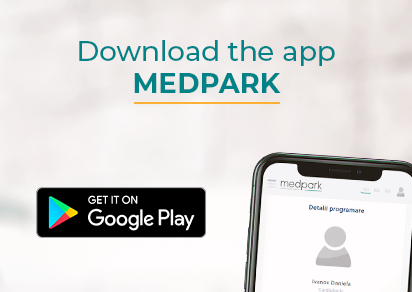The diagnosis of “arrhythmia” is no longer a rarity. Statistics show that up to 1 in 4 adults over the age of 40 live with uncontrollable palpitations, dizziness, difficulty breathing, and chest pain, improving their condition with pills that only delay a new episode.
Although rhythm disorders are among the main causes of stroke and cardiac arrest, until recently, there was no dedicated and definitive treatment for this problem in our country. Open-heart surgeries are only rarely an option, associated with multiple risks and challenging recovery.
The Medpark Cardiovascular Center offers state-of-the-art solutions for cardiac patients in the treatment of arrhythmias – minimally invasive procedures that can end dependence on medications or significantly simplify drug treatment.
Cardiac ablation or electrophysiological study Cardiac ablation or electrophysiological study is a technique that has revolutionized the treatment of arrhythmias and is currently used as a first-line therapy in the management of supraventricular tachyarrhythmias (atrial flutter, atrial fibrillation) and ventricular tachycardia.
Starting from the fact that arrhythmias are a consequence of the disruption of the electrical impulse circuit that contracts the heart muscle, modern medicine has invented electrophysiology – a branch of cardiology that can eliminate the “short circuit” at the heart level through radiofrequency energy (burning) or cryoenergy (freezing). This “burning” or “freezing” will destroy the tissues that cause arrhythmia.
The advantages of the procedure are:
- It is performed with local anesthesia, and only in some cases is general anesthesia needed.
- Discomfort and risks are minimal.
- Postoperative pain is minimal.
- Most patients can go home on the day of the procedure or the following day.
- Depending on the type of arrhythmia, after ablation, either complete healing occurs (after the procedure, the patient will no longer take medication to control arrhythmia) or treatment is simplified.
Permanent cardiac pacemaker The cardiac pacemaker is a device the size of a matchbox, weighing 20-50 grams, and it is placed in the chest or abdomen to control abnormal heart rhythms. It uses electrical impulses to normalize heartbeats and treat arrhythmia. The cardiac pacemaker not only reduces arrhythmia symptoms, such as fatigue, dizziness, and fainting but also helps the person with an abnormal heart rhythm return to a more active lifestyle.
If the pacemaker detects the heartbeats as too slow, too fast, or irregular, it transmits signals at a steady pace. When the pacemaker determines that the heartbeats are normal, it does not transmit any signals.
Implantable Cardioverter Defibrillators (ICD) An implantable cardioverter defibrillator is a device similar to a pacemaker. It delivers larger electrical shocks to the heart, essentially to “restart” the heart and make it pump again. Some devices include both a pacemaker and ICD in a single device.
ICD is often used in preventive treatment for individuals at risk of sudden cardiac arrest in the future. If the defibrillator detects that the heart is potentially beating in a dangerously abnormal rhythm, it will send an electric shock to the heart to help restore normal heart rhythm.
Devices with resynchronization and defibrillation function (CRT-D) Cardiac resynchronization is an innovative treatment method for patients in critical condition for whom medication no longer yields any results. One procedure to address these problems is the implantation of a CRT-D.
Cardiac resynchronization therapy using CRT-D involves sending small, undetectable electrical impulses to both lower chambers of the heart to make them beat simultaneously. The device implanted in the patient’s body will improve the heart’s ability to pump blood and oxygen throughout the body and can accelerate a slow-beating heart.
This device also includes an external computer located in the doctor’s office, which is used to program the implanted CRT-D device, retrieve information about the patient’s condition, and assist the doctor in prescribing treatment for heart failure. Following such CRT-D implantation procedures, the quality of life for patients visibly improves.
Among other state-of-the-art procedures for maintaining heart rhythm available at Medpark are:
- Implantation of intracardiac defibrillators (ICD) and resynchronization devices (CRT) for the control and maintenance of cardiac rhythm. This procedure allows for the restoration of physiological heartbeats in cases of lethal and malignant arrhythmias and prevents sudden death.
- Temporary pacing.



